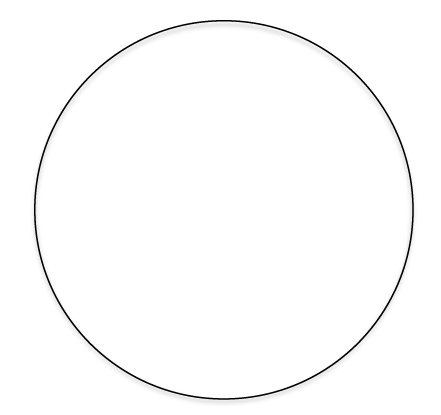Lab Activities
A list of words is provided below that you are expected to identify, learn, and label on the models provided. Note that not all models will have some of the organs/structures, so be sure to find them on an alternate model. You must use all the words provided. Using the colored tape provided, write the number that corresponds to the organ/structure and place them on your model. When complete, notify your TA so they may check your work.
For each additional station, directions will be provided for the activity.
Station One: Muscles of the Upper Body
Label the models of this station with the number that corresponds to the appropriate structure of the peripheral nervous system using the colored tape. When you are finished, ask your TA to check your labeling. Before leaving the station, remove all the labels you have placed on the model.
Note: For the following structures, be able to differentiate between left and right halves when applicable.
Muscles of the Head and Neck
|
#1 epicranial aponeurosis |
#7 nasalis |
#13 zygomaticus minor |
#19 sternocleidomastoid |
|
#2 front belly of occipitofrontalis |
#8 orbicularis oculi |
#14 zygomaticus major |
#20 platysma |
|
#3 occipital belly of occipitofrontalis |
#9 levator labii superioris |
#15 buccinator |
#21 sternohyoid |
|
#4 temporalis |
#10 levator anguli oris |
#16 risorius |
#22 scalenes |
|
#5 auricularis superior |
#11 depressor anguli oris |
#17 orbicularis oris |
|
|
#6 procerus |
#12 depressor labii inferioris |
#18 mentalis |
|
Muscles of the Eye
|
#23 levator palpebrae superioris |
#25 medial rectus |
#27 inferior recuts |
#29 superior oblique |
|
#24 lateral recuts |
#26 superior rectus |
#28 inferior oblique |
#30 trochlea |
Muscles of the Arms
|
#31 deltoid |
#33 clavicular part of deltoid |
#35 coracobrachialis |
#37 biceps brachii |
#39 brachioradialis |
|
#32 acromial part of deltoid |
#34 spinal part of deltoid |
#36 triceps brachii |
#38 brachialis |
#40 extensor digitorum |
Station Two: Muscles of the Back and Abdomen
Label the models of this station with the number that corresponds to the appropriate structure of the peripheral nervous system using the colored tape. When you are finished, ask your TA to check your labeling. Before leaving the station, remove all the labels you have placed on the model.
Note: For the following structures, be able to differentiate between left and right halves when applicable.
|
#1 trapezius |
#7 teres major |
#13 pectoralis minor |
#19 internal intercostals |
|
#2 levator scapulae |
#8 teres minor |
#14 serratus anterior |
#20 external intercostals |
|
#3 splenius capitis |
#9 rhomboid major |
#15 recuts abdominis |
#21 diaphragm |
|
#4 supraspinatus |
#10 rhomboid minor |
#16 external oblique |
|
|
#5 infraspinatus |
#11 latissimus dorsi |
#17 internal oblique |
|
|
#6 subscapularis |
#12 pectoralis major |
#18 transversus abdominis |
|
Station Three: Muscles of the Lower Body
Label the models of this station with the number that corresponds to the appropriate structure of the peripheral nervous system using the colored tape. When you are finished, ask your TA to check your labeling. Before leaving the station, remove all the labels you have placed on the model.
Note: For the following structures, be able to differentiate between left and right halves when applicable.
|
#1 gluteus maximus |
#7 vastus lateralis |
#13 gracilis |
#19 extensor digitorum longus |
|
#2 gluteus medius |
#8 vastus intermedius |
#14 adductor longus |
#20 fibularis longus |
|
#3 gluteus minimus |
#9 hamstrings |
#15 pectineus |
#21 tibialis anterior |
|
#4 quadriceps |
#10 biceps femoris |
#16 sartorius |
#22 flexor digitorum longus |
|
#5 rectus femoris |
#11 semitendionosus |
#17 gastrocnemius |
#23 tibialis posterior |
|
#6 vastus medialis |
#12 semimembranosus |
#18 soleus |
|
Station Four: Histology – Muscle
Sketch the slides available for today’s lab and specify the magnitude at which you are observing/ sketching. Be sure to identify and label your sketch with the corresponding structures listed beneath each slide.
 |
 |
| Striated muscle |
Cardiac muscle |
Station Five: Histology – Integumentary
Sketch the slides available for today’s lab and specify the magnitude at which you are observing/ sketching. Be sure to identify and label your sketch with the corresponding structures listed beneath each slide.
 |
 |
|
Skin of palm |
Human scalp w/hair follicle |

Squamous epithelium
Station Six: Integumentary
Label the models of this station with the number that corresponds to the appropriate structure of the peripheral nervous system using the colored tape. When you are finished, ask your TA to check your labeling. Before leaving the station, remove all the labels you have placed on the model.
Skin
|
#1 epidermis |
#5 stratum spinosum |
#9 papillary layer |
#13 hypodermis superficial fascia |
|
#2 stratum corneum |
#6 stratum basale |
#10 reticular layer |
#14 lamellated corpuscles |
|
#3 stratum lucidum |
#7 epidermal ridges |
#11 dermal papillae |
#15 thin (hairy) skin |
|
#4 stratum granulosum |
#8 dermis |
#12 subcutaneous layer (Hypodermis) |
#16 thick (hairless) skin |
|
#17 squamous epithelium |
Hair
|
#18 pili |
#20 hair root |
#22 bulb |
|
#19 hair shaft |
#21 hair follicle |
#23 arrector pili muscles |
Glands
|
#24 sebaceous |
#26 eccrine sweat |
#28 ceruminous |
|
#25 sudoriferous |
#27 aprocrine |
|
Nail
|
#29 nail body (nail plate) |
#31 lunula |
#33 nail bed |
|
#30 free edge |
#32 eponychium (cuticle) |
|

